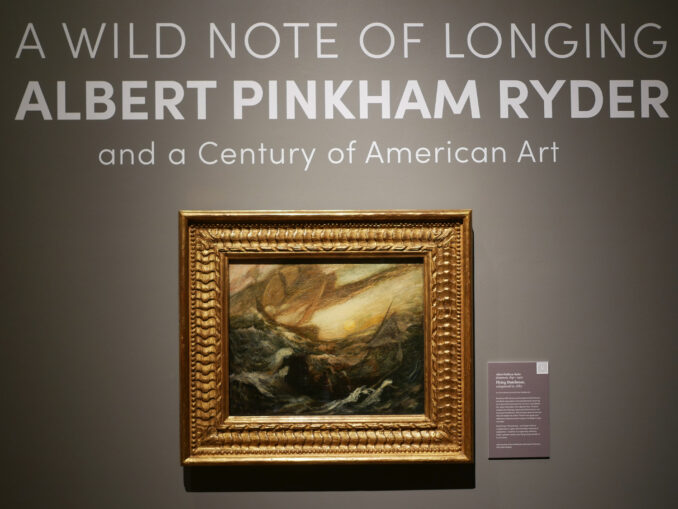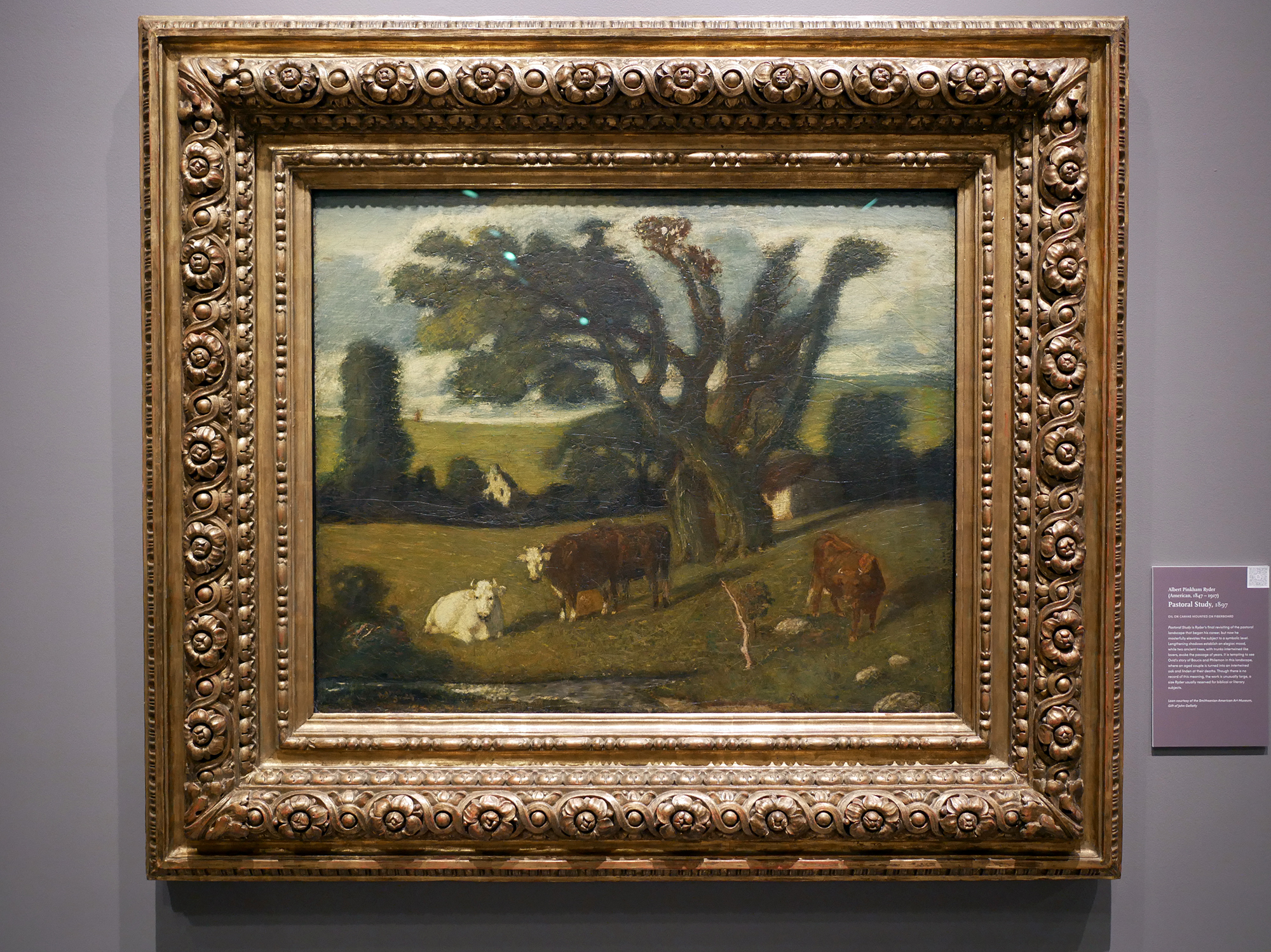
By all accounts, Albert Pinkham Ryder was a solitary man who spent most of his life chasing visions in paint. Visions that spoke to matters well beyond the surface of things to reflect the mystery, power, and beauty of the natural world and our rather fragile place within it.

I was a child when I first saw a reproduction of Ryder’s The Race Track (Death On A Pale Horse) and it has haunted my imagination every since. Race Track is in the collection of the Cleveland Museum of Art and the year(s) of its production are listed as c. 1896–1908 while measuring about 27 x 35 in., which tells you something important about how Ryder worked.

Ryder was born in New Bedford, MA, a bustling whaling town in its day, in 1847 and the New Bedford Whaling Museum has mounted more than a mini-retrospective of Ryder’s paintings on view until the end of October. My wife and I made the trip to New Bedford to spend some time with one of painting’s masters.

As is the case with anything worth seeing, photographs fail to capture everything to be seen in Ryder’s paintings, most representing years of work, layer after layer of paint applied, scrapped off and reapplied over time to capture an essence, a light and often a dark that exist in delicate (or violent) balance, appearing as real as the sun itself if you stand in front on one, or more, for longer than a few seconds.

The Grazing Horse is an old friend and usually resides in the Brooklyn Museum. The Ryder family moved from New Bedford to New York City in the 1860s where Albert spent the rest of his life, but his works show nary a sign of the big city.

Ryder’s seascapes are perhaps his best known works. When seen in person, there are about 60 million different colors, shades, and hues in that sky.

Some viewer’s might wonder if Ryder’s skills as a draughtsman were somewhat lacking, mistakenly focusing on form over feeling. If there’s one thing that becomes more than evident when taking in this show whole is Ryder’s clear mastery of form (and feeling).


I fell in love a number of times during A Wild Note Of Longing, the title of the exhibit sourced from one of Ryder’s poems.

None made me fall harder than A Country Girl and its sad story:
Ryder was shy with women, adopting an elaborate courtesy in his rare interactions with them. His mother had worn Quaker dress; he was raised with three brothers and attended a boy’s school; there is no mention of a romantic attachment before he reached forty. So Ryder’s friends were surprised one day to learn that he had found a young girl from the country wandering the streets and brought her home to live in his apartment; the friends discretely spirited her off to the police, leaving Ryder bereft and “love sick.” His clumsiness in courtship was manifested in other ways as his loneliness grew more acute; the question of his sexual orientation was never mentioned.

A Wild Note Of Longing, curated by Elizabeth Broun, contains 25 paintings by Ryder (his total production is estimated at around 160 paintings, many having deteriorated over time due to Ryder’s process) plus work by more contemporary artists whose works are more and less decedents.

The New Bedford Whaling Museum felt like the perfect home for these works and if you enjoy being moved, tossed and turned, and treated to a view of the world that retains mystery and majesty, make your way to a A Wild Note Of Longing. In the mean time, travel over to the Museum’s website for a look at every painting in the show and more.

Museum Website: New Bedford Whaling Museum

